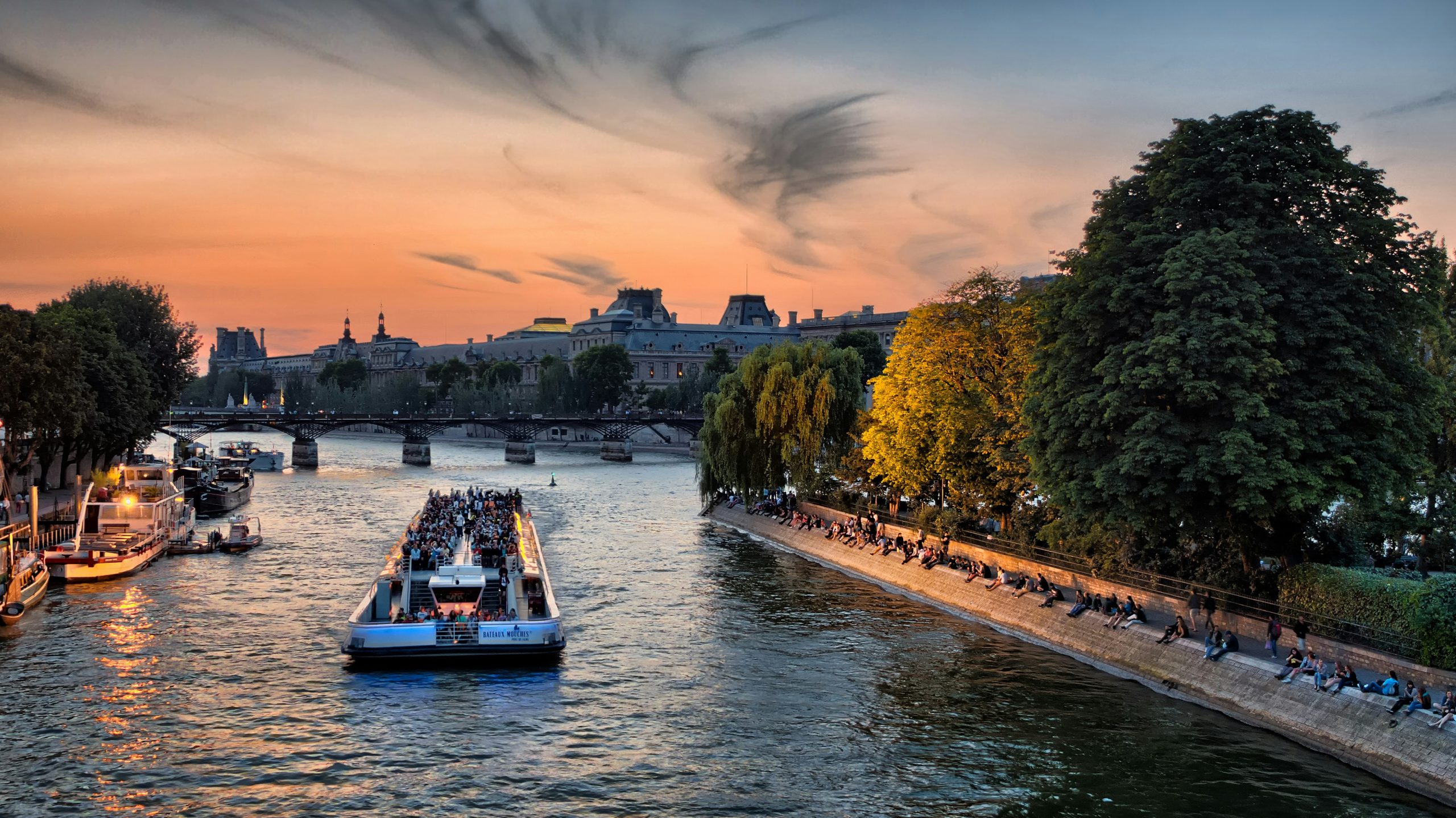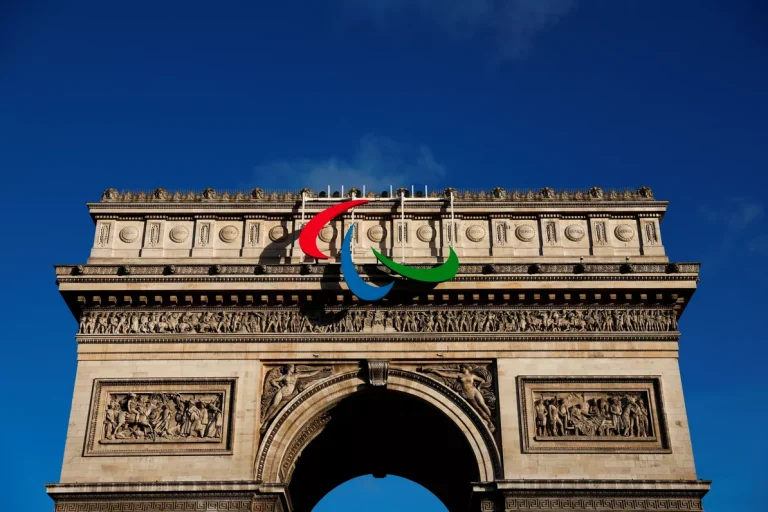“In Paris, I see before me five thousand hectares – five thousand hectares that have been more thought about, more talked about and more written about than any other on the face of this earth” wrote Jean Giraudoux.
We enjoy wandering through the French capital, losing ourselves in each narrow alleyway and wondering what the City of Lights was like centuries before…the opportunity to breathe a little magic and history into our rambles is never far away! Follow the guide – we’ll whisk you back to the Paris of two hundred years ago, inspiration for two key writers of the French literary canon: Victor Hugo and Émile Zola.

Above Les Halles, the former ‘Cour des Miracles’
We begin our ride near Réaumur-Sébastopol, in what was once a famous haunt of pickpockets and other disreputable folk: the ‘Cour des Miracles’. Before the French Revolution, so-called ‘Cours des Miracles’ were lawless places – they got their name from the disabilities of the people begging there, which disappeared once night-time fell ‘as if by miracle’. Paris had around a dozen of these areas, with the biggest at the intersection of rue du Caire, rue des Forges, l’impasse de la Corderie, rue Thévenot, rue de Damiette and rue Réaumur.
This particular ‘Grande Cour des Miracles’ was described by Victor Hugo in Notre-Dame-de-Paris as follows: “It was a huge square, irregularly-shaped and poorly-paved, like all squares in Paris at that time. Fires were blazing here and there, around which strange groups swarmed. There was a constant coming and going, as well as shouting”. It was here that Esmeralda saved the poet Pierre Gringoire from hanging by marrying him for three years.

©La Cour des Miracles, illustration de Gustave Doré pour le roman Notre Dame de Paris de Victor Hugo 1860
Initially located just beneath the Charles V-era city wall (rue de Cléry), one of seven major walls to have surrounded Paris, it’s still possible to make out the Cour des Miracles made famous by Hugo if you go down rue de Damiette and rue des Forges. Follow in the footsteps of Esmeralda as you take the rue du Nil: it was one of the passages leading to this very unsavoury part of the capital…
Vélib’ station: Station n°2017, Caire – Dussoubs
Châtelet – Les Halles, open-air market and rallying place for rebellions
Let’s continue our literary itinerary as far as Châtelet, right in the heart of Paris!
Its famous “Halles” (covered markets) have been in existence since 1137: wholesale fresh food markets of the kind that have always been frequented by Parisians to buy cheese, meat, fish, cereals and flour).
This district was constantly busy. The construction of a Corn hall, accessible from the Seine River, was recorded in 1763, on the former grounds of the old Hôtel de Soisson. To find the remnants of this old Corn hall, you’ll have to go to 2 Rue de Viarmes, home of the former Paris Commodities Exchange (la Bourse de Commerce).
Many years later, in 1852, architect Victor Baltard created a glass and metal design in the shape of an umbrella for the individual arcades. Each sold different produce (poultry, seafood etc). The arcades were separated by a central street which started at the foot of the church of Saint-Eustache. It’s now better known as the ‘Allée André Breton’.

©Editions André Leconte, Paris – Les Halles – Un Pavillon., entre 1890 et 1920, Musée Carnavalet Histoire de Paris
Thanks to Emile Zola, we can still imagine the very special ambiance this place must have had towards the end of the 19th century ‘The voice of the markets could be heard from afar. It became deeper, louder, and the intermittent peals of bells ringing in some far-off pavilion cut through the swelling, rising hubbub. They entered one of the covered streets between the fish and poultry arcades’ (extract from the novel, ‘Le Ventre de Paris’).
A place that has played a starring role in French history, Châtelet was at the very centre of the clashes that marked the June 1832 rebellion, which aimed to overthrow the July monarchy. Right in the heart of Châtelet, Republicans fought the soldiers of the King and the national guard, which had come to restore order. It was on a barricade on rue de la Chanvrerie that the street urchin Gavroche died in ‘Les Misérables’. Although rue de la Chanvrerie was swallowed up by rue Rambuteau in 1838, you can still conjure up the scene of this old barricade where rue Saint-Denis and rue Mondétour meet…this particular chapter in the rebellion finished with Jean Valjean saving Marius in the cabaret de Corinthe, which no longer exists, but which was located at 102 rue Rambuteau.
Vélib’ station: Station n°1008, Les Halles – Saint-Eustache
Notre-Dame-de-Paris, saved by Victor Hugo
Let’s continue our gentle ride a little further around this area. What can you see opposite Châtelet? Notre-Dame, every bit as majestic as it’s described in multiple works of French literature. This enormous project began on the initiative of Bishop Maurice de Sully in 1163, only being completed in 1345. A few centuries later, Victor Hugo saved this historic building by highlighting its sorry state of repair in his writing. This resulted in a tender to restore the cathedral.

©Dessin de François Chifflart, Attaque de Notre-Dame, entre 1890 et 1920, illustration du roman de Victor Hugo, Notre-Dame de Paris, maison de Victor Hugo, vers 1876-1877
It’s still possible to imagine the shadowy figures of Quasimodo and Esmeralda moving behind these age-old walls. These same walls still tower majestically above us, despite the horrifying fulfilment of Hugo’s vision in spring 2019: ‘Every eye looked towards the highest point of the church. There they beheld an incredible spectacle. At the top of the highest gallery, higher than the central rose window, a large flame rose between the two bell towers, accompanied by whirling sparks, a huge, chaotic, furious flame, tongues of which were carried by the wind into the smoke. Beneath this flame, beneath the darkened balustrade with its trefoil design, lit by flames, two gutters in the shape of monstrous maws vomited forth a constant, fiery rain, a silver-tinted stream that stood out starkly against the shadowy lower façade.”
An almost uncannily prophetic description.
Vélib’ station: Station n°4003, Quai aux Fleurs – Pont Saint-Louis
If you like reading, the Emile app will help you explore Paris through the eyes of your favourite writers. Extracts from novels are available at certain locations and you can even contribute yourself by sharing extracts from books that have left a particular impression on you.








